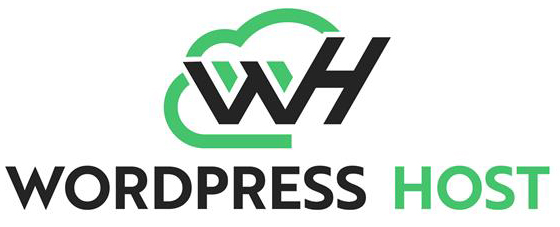In the dynamic realm of online presence, where every click, scroll, and interaction determine success, the performance of your website emerges as the unsung hero. When it comes to the potent blend of functionality and efficiency, the backbone of your virtual domain lies in the robust world of WordPress servers. As the digital heartbeat propelling your online oasis, these servers hold the key to unlocking unparalleled speed, security, and scalability, thus shaping the user experience that sets you apart in the ever-evolving virtual landscape.
As we traverse the intricate path of enhancing your digital footprint, delving into the realm of maximizing website performance becomes not just a necessity but a strategic imperative. Join us on a journey where we unravel the enigmatic prowess of WordPress servers, transcending mere functionality to elevate your website into a symphony of seamless user engagement and unrivaled performance. Step into a realm where sluggish loading times and security vulnerabilities are relics of the past, paving the way for a digital experience that captivates and converts effortlessly. Let’s embark on a quest to harness the true potential of your online presence with the transformative power of WordPress servers.
Understanding the Core Components of WordPress Servers
At the heart of every WordPress server lies a powerful combination of hardware and software components that work together to deliver exceptional performance. These core components include:
1. Web Server: The web server is responsible for handling incoming requests and serving web pages to users. Apache and Nginx are popular choices for WordPress servers, known for their reliability and scalability.
2. Database Server: The database server stores all the website’s data, including posts, pages, user information, and settings. MySQL or MariaDB are commonly used database management systems in WordPress servers.
3. PHP: PHP is a scripting language that powers WordPress websites. It processes dynamic content and interacts with the database to generate web pages on-the-fly.
4. Content Delivery Network (CDN): A CDN is a network of servers located around the world that caches static content like images, CSS files, and JavaScript files. By storing these files closer to users geographically, CDNs reduce latency and improve website loading speeds.
To maximize your website’s performance with WordPress servers, it’s crucial to understand how these core components work together seamlessly.
Leveraging Caching Mechanisms for Lightning-Fast Loading Speeds
A key factor in delivering lightning-fast loading speeds is implementing effective caching mechanisms on your WordPress server.
1. Browser Caching: By instructing browsers to store certain static resources locally, such as images or CSS files, you can reduce the number of requests made to your server each time a user visits your website.
2. Object Caching: Object caching involves storing frequently accessed data in memory, reducing the need to query the database repeatedly. WordPress plugins like Redis or Memcached can help implement object caching.
3. Page Caching: Page caching generates static HTML versions of your web pages and serves them to users, bypassing resource-intensive PHP and database queries. Popular caching plugins like W3 Total Cache or WP Rocket simplify the implementation of page caching.
By leveraging these caching mechanisms, you can significantly improve your website’s loading speeds and enhance user experience.
Implementing Robust Security Measures to Safeguard Your Virtual Domain
Securing your WordPress server is paramount to protect your website from potential threats and vulnerabilities. Here are some essential security measures:
1. Regular Updates: Keep your WordPress core, themes, and plugins up to date to patch any security vulnerabilities that may exist in older versions.
2. Strong Passwords: Enforce strong passwords for all user accounts on your website, including administrators, editors, and contributors.
3. Two-Factor Authentication (2FA): Implement 2FA to add an extra layer of security by requiring users to provide a second form of authentication, such as a unique code sent to their mobile device.
4. Web Application Firewall (WAF): A WAF acts as a shield between your website and potential threats by filtering out malicious traffic and blocking suspicious requests.
5. Limit Login Attempts: Set up limitations on the number of login attempts allowed within a specific timeframe to prevent brute-force attacks on your WordPress server.
Taking these robust security measures will help safeguard your virtual domain against potential threats and ensure the integrity of your website’s data.
Harnessing the Scalability Features of WordPress Servers for Growth
As your website grows and attracts more traffic, it’s essential to harness the scalability features of WordPress servers to ensure smooth performance. Here are some strategies:
1. Load Balancing: Implement load balancing to distribute incoming traffic across multiple servers, preventing any single server from becoming overwhelmed.
2. Horizontal Scaling: Scale horizontally by adding more servers to your infrastructure as your website’s traffic increases. This allows for better resource allocation and improved performance.
3. Database Optimization: Optimize your database by removing unnecessary data, optimizing queries, and using caching plugins to reduce the load on your database server.
4. Content Delivery Networks (CDNs): Utilize CDNs to deliver static content from servers located closer to your users, reducing latency and improving website loading speeds globally.
5. Monitoring and Analytics: Regularly monitor your website’s performance using tools like Google Analytics or server monitoring software to identify bottlenecks and optimize accordingly.
By harnessing these scalability features, you can ensure that your WordPress server can handle increased traffic without compromising performance or user experience.
Exploring Content Delivery Networks (CDNs) for Global Reach
A Content Delivery Network (CDN) is a network of servers strategically placed around the world to deliver content quickly and efficiently. By utilizing a CDN with your WordPress server, you can achieve global reach and improve website performance for users worldwide.
A CDN works by caching static content like images, CSS files, and JavaScript files on its servers located in various geographic locations. When a user requests a web page from your website, the CDN serves the cached content from the server closest to the user, reducing latency and improving loading speeds.
CDNs also help mitigate traffic spikes by distributing the load across multiple servers, ensuring that your website remains accessible even during periods of high demand.
Popular CDNs like Cloudflare, MaxCDN, or Amazon CloudFront integrate seamlessly with WordPress servers, allowing you to easily configure and optimize your CDN settings for maximum performance.
Conclusion: Elevating Your Website Performance to New Heights
In conclusion, maximizing website performance is a critical aspect of establishing a successful online presence. By harnessing the power of WordPress servers and implementing caching mechanisms, robust security measures, scalability features, and content delivery networks (CDNs), you can elevate your website’s performance to new heights.
Remember to regularly monitor your website’s performance, analyze data, and make necessary optimizations to ensure continued success. With the right combination of technical expertise and strategic implementation, you can unleash the true potential of your online presence with WordPress servers.


